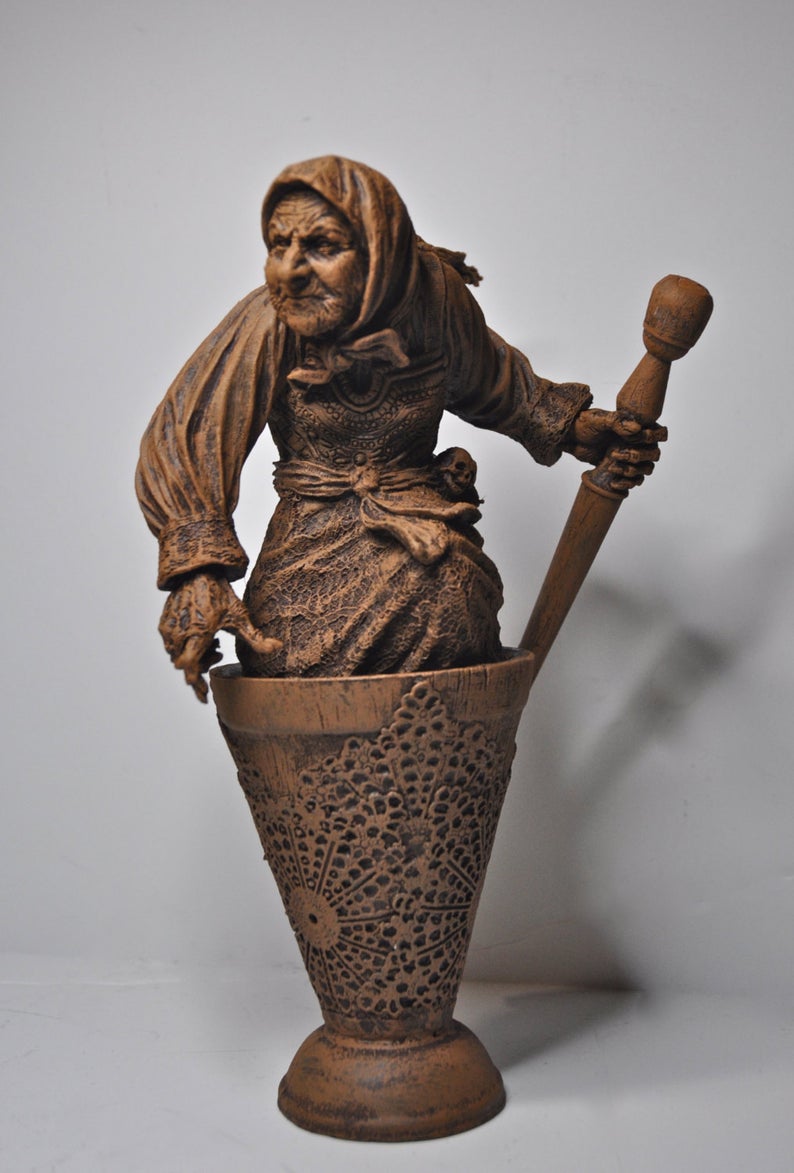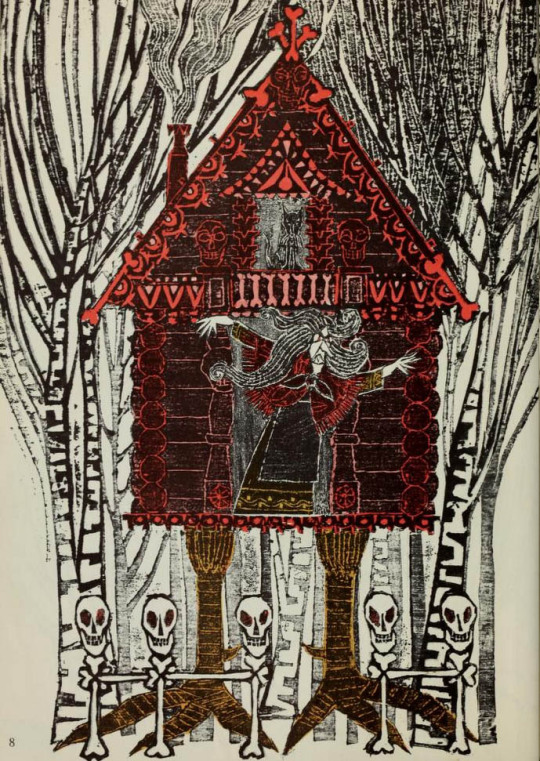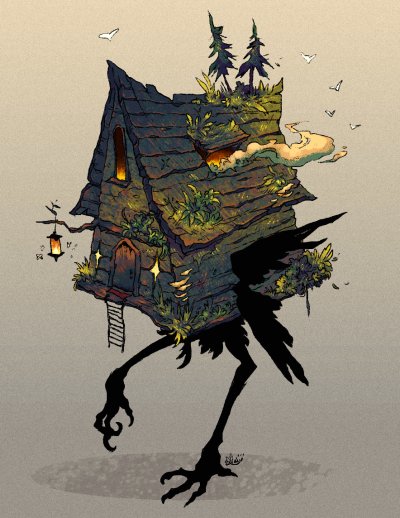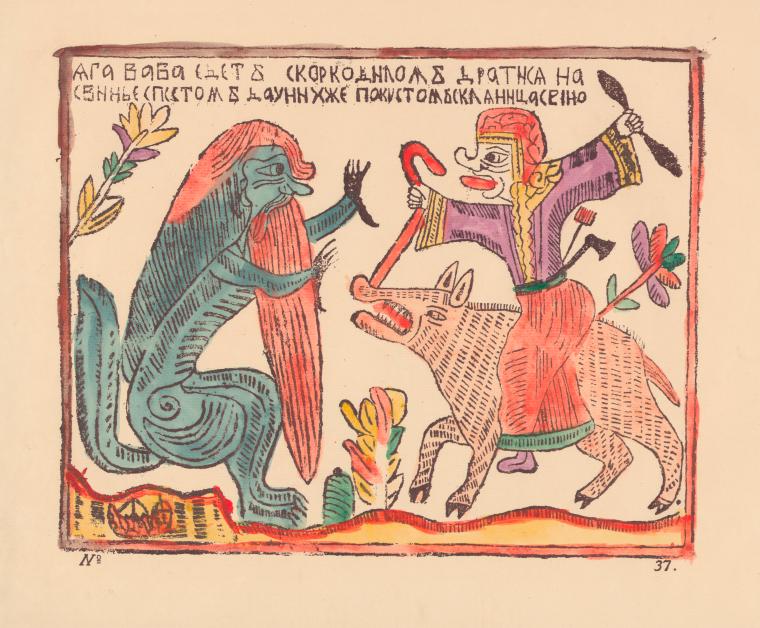The very name Baba Yaga is multi-faceted. In Old Russian baba can mean grandmother (‘babushka’) but also variously midwife, sorceress or fortune teller.
Resin sculpture @dellamorteco
Ernest Small, illustration for children's book 𝘉𝘢𝘣𝘢 𝘠𝘢𝘨𝘢 (1966)
Baba Yaga's hut print by Barking Trees on Redbubble
Lubok print, 17th century Russia, unknown artist.









